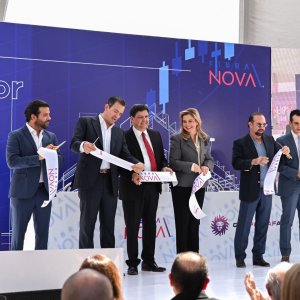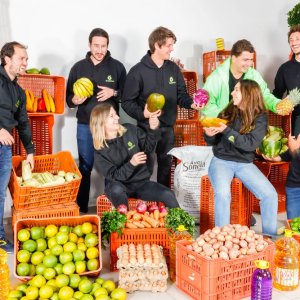How to Co-Create a Sustainable Food System

STORY INLINE POST
To solve problems related to poverty and food insecurity, responsible consumption, climate change, pests and diseases, requires a holistic solution that is focused on the cause of the problem.
Over the years, the demand for food products has led the agro-alimentary sector to produce to meet the demand that is growing significantly every year.
The main factor that has not received relevant importance is the loss of biodiversity within our soil, which leaves us with land that is undernourished and, therefore, provides fewer nutrients to our plants and weakens their ability to fight pests. This has led us to the use of an endless number of pesticides, antibiotics and growth accelerators that result in grains and meat of low nutritional quality and an increase in diseases among consumers.
According to its definition, a "sustainable food system is a food system that guarantees food security and nutrition for all people in such a way that the economic, social and environmental foundations that provide food security and nutrition to future generations are not put at risk" (HLPE 2014, 34).
Making food security and nutrition a central priority for assessing the sustainability of food systems will help break the vicious circle that malnutrition and disease create for all generations and help policymakers turn data into action. Achieving food security and nutrition should never be considered a variable trade-off (HLPE 2014).
The food system has been changing significantly for the last 50 years and especially in the last 25 years, moving from a traditional system to a mixture of transition and modernity (Reardon et al. 2018).
Almost 80 percent of food poverty is in rural areas, where the population depends on agriculture, fishing or forestry as the main source of income and food. Vulnerable to climate change and other shocks, they suffer the most from crises and are often the first victims of disasters and natural resource degradation (FAO 2017b).
For a large number of people, access to quality food rich in nutrients is a challenge, many of them have opted for small orchards and backyard productions for their own consumption, most of them also sell a part of their production and need to have access to markets not only locally but also nationally.
Depending on the context, lack of access to food, both physical and economic, can increase the risk of malnutrition, as well as obesity and diet-related noncommunicable diseases (NCDs) (Duran et al. 2015; Feng et al. 2010; Holsten 2009; Glanz et al. 2005).
According to The Future of Food and Agriculture: Trends and Challenges study (FAO 2017a), the triple burden of malnutrition – malnutrition, micronutrient deficiency, overweight and obesity – affects a high proportion of the world's population.
How do we change our food system to make it sustainable?
We must find a way to modify our industrialized food system and migrate it toward small, safe, and nutritious production, avoiding the overexploitation of our resources, re-nourishing our lands to obtain quality food, reintegrating the small products that have been displaced from our food system and implementing technology.
The reasons these products have been left out of the food system is that their production is small and they are not profitable, even though they provide higher quality.
The solution that will allow them to be reintegrated into our system, and with small profitable production, is the integration of technology in a simple way that creates efficient production while increasing quality and ensuring traceability.
Empowering women with knowledge and improving their visibility in the agri-food sector is another necessary course of action. Often, they are not remunerated or have no right to own lands inherited by their parents for the simple fact of being women. This makes it impossible for them to work the land.
Another issue is access to markets that pay a fair price for their production. It is necessary to bring production closer to consumption by understanding the gaps between the supply and demand for healthy foods and to propose strategies where small producers and family farming are among the main suppliers of food. Different programs could range from promoting education and “backyard farms” for food and nutrition to linear efforts among government, companies, consumers and producers to ensure production is more respectful of our environment, eliminating the greenhouse gases produced by agriculture and livestock.
The integration of biotechnologies is essential to improve nutrient absorption, structure, fertility and sustainability, adding value to a product.
One way to improve traceability and food safety is through technologies that are affordable for small producers and allow us to produce while also ensuring animal welfare, reducing the related environmental impact. The challenge is introducing innovative tools and technology to small producers in a sector where conditions often remain traditional and where producers are vulnerable. We must raise awareness of the situation in the agri-food sector, when there is a disconnect from and ignorance of current agricultural and livestock practices.
























